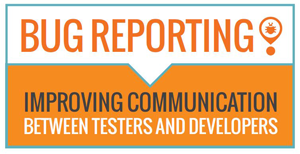When we build an app or a website, we often focus solely on our quality assurance efforts. Yet, a successful product also relies on quality engineering. The two practices are often confused, but is a distinct method that can enhance the overall quality and success of your product. Below we discuss everything you need to know about quality engineering in the software development world.
What is quality engineering?
If you’re like most people, you likely don’t know much about quality engineering. And indeed, it is a newer practice in the software development industry. However, the basics are rather simple. At its core, quality engineering is all about the quality of a product. Similar to quality assurance, you perform a series of tests to uncover and eventually resolve any issues in a product. Also, takes steps to reduce waste throughout product development, ensuring low costs and high efficiency.
Quality engineering vs. quality assurance
Quality engineering is often confused with quality assurance. This is to be expected, as the two practices are quite similar. Both are focused on the quality of a product. However, while the goals are the same, the means of doing so are different.
Quality assurance focuses on the finished product, while quality engineering is involved in every phase of product development.
In other words, quality assurance is implemented only when a product is complete. It essentially checks to make sure that all of the rough edges have been smoothed out. Meanwhile, is implemented in the design, development, and manufacturing processes. It is constant, flexible, and agile, checking for issues at each stage.
Types of quality engineering tests
It relies on a series of tests to ensure the overall quality of your product at each stage of development. While there are several QE tests, below are the most common:
DevOps/Continuous Testing
DevOps is not a type of test but a culture that is essential for good-quality engineering. It focuses on removing barriers between different software development and operations teams to improve efficiency and collaboration. However, DevOps does rely on a type of testing called continuous testing. Continuous testing is comprised of three stages: continuous integration, continuous delivery, and continuous deployment. Each stage helps to continually test a product throughout development and after launch, delivering much-needed updates in a quick and seamless manner.
Agile Testing
Another aspect is agile testing. Used in conjunction with DevOps and continuous testing, agile testing simplifies the process and provides constant feedback. It starts in the continuous integration phase and uses three methods: behavior driven development (BDD), acceptance test driven development (ATDD), and exploratory testing. While each method is distinct, all together they offer informal testing with improved communication and integration between customers, developers, and testers.
Test Data Management
Finally, there is test data management. Another aspect of DevOps culture, test data management generates test data to help teams perform rigorous and accurate tests. Quality of test data is of the utmost importance. Without it, your team will not be able to perform accurate tests.
Here at Beta Breakers, we offer quality engineering testing services to many industries across the country. To learn more about our services, contact us today!

 With Experience in Quality Assurance & Testing Desktop Software, Mobile Apps, Websites & Web Applications for Nearly 30 Years, Beta Breakers has become the Premier Software Quality Assurance Labs and Application-Testing Provider -
With Experience in Quality Assurance & Testing Desktop Software, Mobile Apps, Websites & Web Applications for Nearly 30 Years, Beta Breakers has become the Premier Software Quality Assurance Labs and Application-Testing Provider - 


Leave a Reply